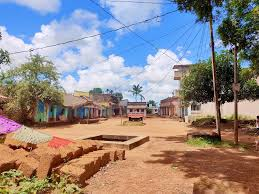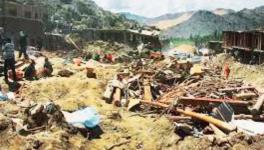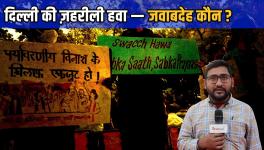Odisha: Nature Speaks Against Vanishing Green Patches, but is Anyone Listening?

As the mercury soars, Odisha's once beautiful capital city, Bhubaneswar, is earning the dubious distinction of being one of the hottest cities in the state. Yet, no one seems to heeding what nature is saying.
It is only April and there’s a long summer ahead. Come May and June the solstice would be far more unsympathetic and would let all, man and animals, singe in extreme humidity, which is normally harsher than the heat in the state.
Traveling on a bike and taking a walk in-between, this writer reaches a place on the far end of the West of the capital, near a public school within Kalinga Nagar-cum-Kalinga Vihar, supposedly the largest residential colony in the state.
What is visible is a concrete monster with its gaping mouth threatening to finish the remnants of a very comforting green patch nearby, a well-groomed little forest that was clearly panting for breath. The forest nestled on the outer precincts of a small village, Nuagaon, once known as an oasis amid a festering sore of cement culture.
The little green expanse was full with nature’s wonders, where peacocks once used to dance looking up at the azure skies, wild sparrows interspersed the quietness with their sweet chirping, mynas frolicking around in search of food amid the grassy patches. As the Sun sets and the evenings mature into night, once could hear the barking sound of jackals.
It can be said that a chip of that soothing green amid the virgin forest is now slowly turning into a hostile habitat for the above wild species.
Unrelenting town planning has seen to it that several small forest patches and years-old trees are being felled to build arterial road tearing through the green patches. Several houses are being built, including some new schools and recreation huts.
“This is what they call town planning 1, 2, 3, 4 and so on, thus squeezing or obliterating the only refuge of a good population of wild species who would soon remain in the past,” Harekrushna Satpathy, a ‘Save Green’ activist, told this writer.
“Similar such mindless activities are literally honey-combing the capital city, thus making way for a toxic tomorrow as the mercury hovers over 40 degree Celsius from just the beginning of April” noted Biswajit Mohanty, an environmental activist.
With the relentless march of "Town Planning 1, 2, 3, 4, 5, and 6", the last refuge of these wild species is shrinking. The trees they once found shelter in are being uprooted, and the open lands where they searched for food are turning into roads and buildings. "Where will they go? How will they survive when the only world they have ever known is disappearing before their eyes?
As their habitat vanishes, the dangers multiply. Poaching, starvation, and displacement loom over them like dark clouds. A jackal searching for food may now be seen as a threat. A peacock, once dancing freely, may now struggle to find a safe place to roost. The balance of nature is being disturbed—not just for them, but for every one of us.
What seems pathetically lacking is a holistic approach toward progress and conservation, a symbiosis that is the need of the hour.
Progress but at what cost? Declare such patches as protected green zones, train people to coexist with nature and species by planting more buffer zones, say environmentalists.
The writer is a freelancer based in Odisha.
Get the latest reports & analysis with people's perspective on Protests, movements & deep analytical videos, discussions of the current affairs in your Telegram app. Subscribe to NewsClick's Telegram channel & get Real-Time updates on stories, as they get published on our website.
























